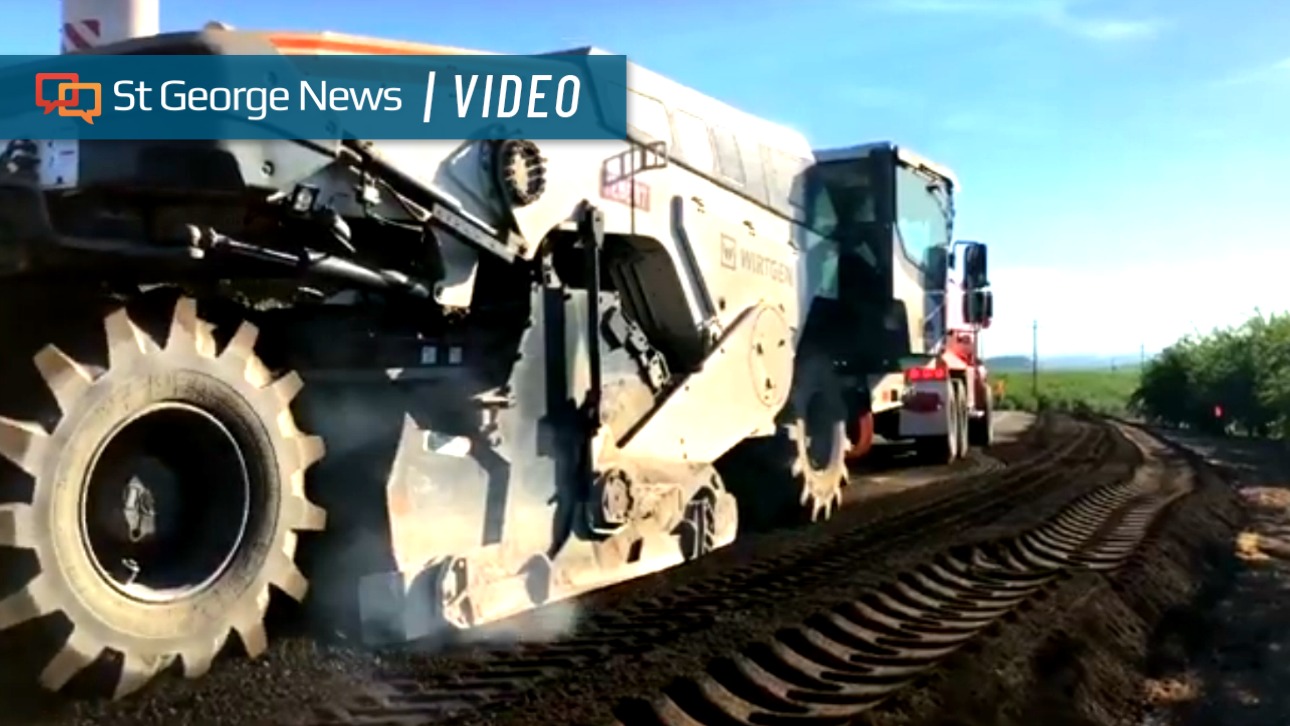ST. GEORGE — When faced with the option of turning paved roads back into gravel due to budget constraints, one Utah county decided to do something different – a decision that is paying off in spades.

According to an old saying in road construction, “Roads wear from the top down but fail from the bottom up.”
With budget constraints and the high cost of road construction and maintenance, San Juan County had too many roads that were failing and not enough money to fix them, and officials needed to come up with a plan.
“With so many road surfaces failing, we had to stretch the budget to make it work,” Ben Musselman, San Juan County public works director, said.
The county decided to use a new repaving process developed by Lithified Technologies on two sections of County Road 110, referred to as Dude Ranch Road, with the upper section that serves as an integral artery into residential areas and must remain open, while the lower section continues to the county landfill and must support the weight of heavy truck traffic.

The experiment was a success, Musselman said, and the new process “adds strength and a little bit of flexibility to accommodate for subsurface movement, which is one of the primary reasons roads fail.”
Since then, San Juan County has used the same technology in two additional road repaving projects, and the reason is simple.
“Our budget keeps shrinking, yet the costs to rebuild continue to go up,” he said, adding that traditional road resurfacing comes at a cost of about $1.3 million per mile, compared to the Lithified Technologies process that cost about $175,000 per mile.
“That was an 80 percent savings, which in turn saves the taxpayer. ”
In addition to savings, he said, the material strengthens the foundation, which in turn maintains the surface “with the beauty of having a little bit of flexibility to account for movement that occurs below the surface.”
It’s the movement that generally causes a concrete road to crack and appear buckled, which was of particular importance being that subsurface movement was a factor in the road failing in the first place.
The process
During the County Road 110 project, the asphalt layer was broken up and pulverized using a large road reclaimer, followed by a second truck that disbursed the chemical over the newly-pulverized asphalt while a third truck sprayed a layer of water over it.

The road surface is then compacted and shaped using rollers and heavy equipment to create what looks like a gravel road, Musselman said, that is then covered with a double-chip seal, which is a layer of oil with chips embedded into it.
Once the materials have set for 24 hours, the surface is swept free of any loose material. In San Juan’s case, a second single-chip seal was added as a final covering.
The process also uses the asphalt or other materials already present, which would otherwise need to be hauled away. That is added savings for the county.
It is a seamless process that is illustrated by the video shown at the top of this report.
Lithified Technologies
Developing an eco-friendly solution to the high cost of maintaining roads across Utah, New Mexico and elsewhere is an idea that was years in the making and could change the way roads are engineered altogether.
“When it comes to road construction, supporting a significant amount of weight while keeping the material dry is the goal,” said Bill Sherwin, cofounder of Lithified Technologies.
He added that even the best materials can fail if the foundation or base is unstable – whether it is expansive clay similar to what is found at the St. George Regional Airport or soil that can collapse, allowing water to get into the foundation, which can cause the road surface to crack and break.
“You can repair the top, but the underlying problem is still the underlying problem,” Sherwin said.
The chemical uses the existing soil, road base or even failing asphalt to create a a strong base or foundation that will make the wear surface last much longer, regardless of the type of materials used by combining soil’s three most common elements, which are oxygen, silicon and aluminum to form aluminosilicate – nature’s cement.
Considering that aluminosilicate takes thousands of years to harden naturally, accelerators are added to speed up that process so it hardens within 24 hours.
The combination of the naturally occurring chemicals in the material combined with moisture and compaction or pressure, turns reclaimed road materials into a foundation with load-bearing capabilities, as was the case in San Juan County.
Click on photo to enlarge it, then use your left-right arrow keys to cycle through the gallery.
Untouched photo of Lithifield Technologies foundation and chip-seal surface, Airport Road, Quay County, N.M., date not specified | Photo courtesy of Lithifield Technologies, St. George News
Email: [email protected]
Twitter: @STGnews
Copyright St. George News, SaintGeorgeUtah.com LLC, 2019, all rights reserved.

